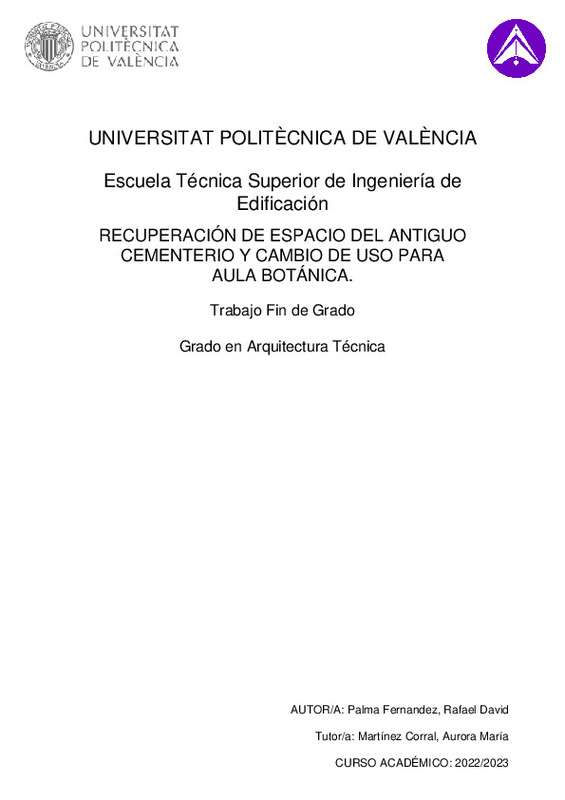JavaScript is disabled for your browser. Some features of this site may not work without it.
Buscar en RiuNet
Listar
Mi cuenta
Estadísticas
Ayuda RiuNet
Admin. UPV
Recuperación de espacio del antiguo cementerio y cambio de uso para aula botánica
Mostrar el registro completo del ítem
Palma Fernández, RD. (2023). Recuperación de espacio del antiguo cementerio y cambio de uso para aula botánica. Universitat Politècnica de València. http://hdl.handle.net/10251/194342
Por favor, use este identificador para citar o enlazar este ítem: http://hdl.handle.net/10251/194342
Ficheros en el ítem
Metadatos del ítem
| Título: | Recuperación de espacio del antiguo cementerio y cambio de uso para aula botánica | |||
| Otro titulo: |
|
|||
| Autor: | Palma Fernández, Rafael David | |||
| Director(es): | ||||
| Entidad UPV: |
|
|||
| Fecha acto/lectura: |
|
|||
| Resumen: |
[ES] Este trabajo final de grado desarrolla y define las soluciones constructivas y programáticas para lograr el acondicionamiento del antiguo cementerio de Titaguas, con la finalidad de crear un espacio natural (Aula de ...[+]
[EN] This final degree work develops and defines the constructive and programmatic solutions to achieve the conditioning of the old Titaguas cemetery, in order to create a natural space (Botany Classroom in honor of the ...[+]
|
|||
| Palabras clave: |
|
|||
| Derechos de uso: | Reserva de todos los derechos | |||
| Editorial: |
|
|||
| Titulación: |
|
|||
| Tipo: |
|
Localización
recommendations
Este ítem aparece en la(s) siguiente(s) colección(ones)
-
ETSIE - Trabajos académicos [2369]
Escuela Técnica Superior de Ingenieria de Edificación







